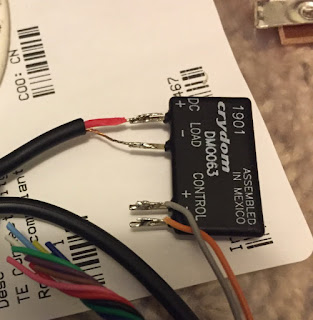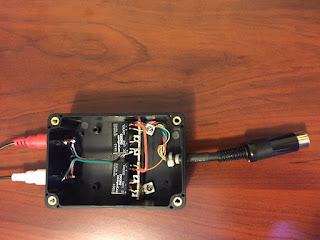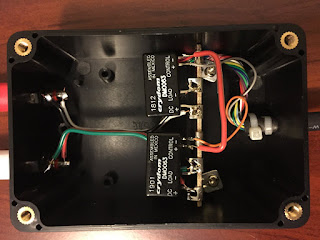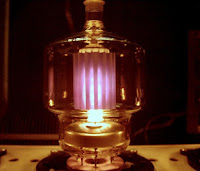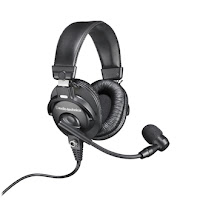 I received a Audio-technica BPHS-1 headset for Christmas from my wife :-) The BPHS-1 looks to be a quality headset that is well rated on Amazon, Audio-technica's site and other places.
I received a Audio-technica BPHS-1 headset for Christmas from my wife :-) The BPHS-1 looks to be a quality headset that is well rated on Amazon, Audio-technica's site and other places.K8JHR wrote an article called Headsets I have tried, like or recommend which includes the BPHS-1.
I quickly discovered that Icom rigs (and Elecraft) are setup for electret condenser microphones, where as the rest use dynamic microphones. Electret mics are powered, dynamic mics are not and are about 20 dB lower in level. The BPHS-1 uses a dynamic mic.
Will a dynamic mic work with an Icom? Maybe..
- https://forums.qrz.com/index.php?threads/fyi-mics-and-ic-7300.562785/#post-4220840 suggests tweaking the mic gain and compression settings.
- Looking at https://heilsound.com/heil-amateur-radio/support/dsp-settings/all-things-icom/ under the IC-7300 section agrees with the QRZ post.
Next, cables. The BPHS-1 comes with a cable that has a 1/4" plug for the headphones and a 3-pin XLRM-type connector for the mic.
- First, the mic pin in an Icom supplies 8 VDC for the electret mics they use, when used with a dynamic mic we need to use a DC blocking capacitor otherwise the magic smoke will come out. Heil recommends a 1 uF tantalum (noted in heilsound.com link above), some posts on QRZ suggest anything up-to 10 uF is good. I found some 2.2 uF 16V tantalum capacitors on Amazon, these are polarized so the positive leg should connect to the mic pin in the Icom.
- Mic side: Need a female 3-pin XLRM, I chose this cable from Amazon, can cut to length and wire into a 8-pin Foster mic plug with the DC blocking cap for the Icom's mic socket.
- Headphone side: 1/4" to 3.5mm adapters are easy to find, thou I prefer a short cable here so the 3.5mm jack in the rig doesn't have an adapter and 1/4" plug hanging out of it. A quick search around Amazon finds MillSO 1/4 to 3.5mm Headphone Adapter, TRS 6.35mm Female to 3.5mm Male 1ft cable.
- A cheaper option is to just cut the 1/4" and 3-pin XRLM plugs off, put a 3.5mm plug on the headphone side, and 8-pin Foster mic plug on the other plus the DC blocking cap.
Parts ordered, plan to have it together next week..
Parts arrived yesterday 29 Dec, I installed the DC blocking cap into the mic plug, I found I could fit it in-between the unused pins:

I cut the XLRM cable so it matched the 1/4" to 3.5 mm adapter cable length, and it looks like this:
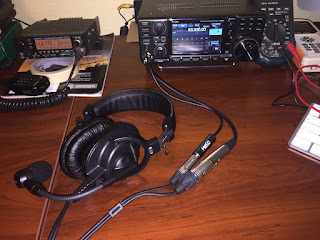
Wiring diagram: Headset diagram from BPHS-1 manual (left), the mic connector diagram is from my Icom IC-7300 manual (right), with the connections shown as I wired it:

The shield (shown in green) I folded back in the mic plug and "clamped" in with the strain relief so it's grounded to the frame of the radio via the plug.
After adjusting the mic gain and compressor settings on SSB, I found mic gain at 80% and compressor at 5 would drive the IC-7300 about the same as the supplied hand mic with mic gain at 40% and compressor off. I did this by doing several comparisons watching the RF power output and listening to my self via the rigs monitor function with the headset on.
I have yet to do an on air test on SSB. I was able to do a quick test on a 6 m FM repeater, on FM the speech compressor option is unavailable and with the mic gain set to 100% the deviation is too low.
